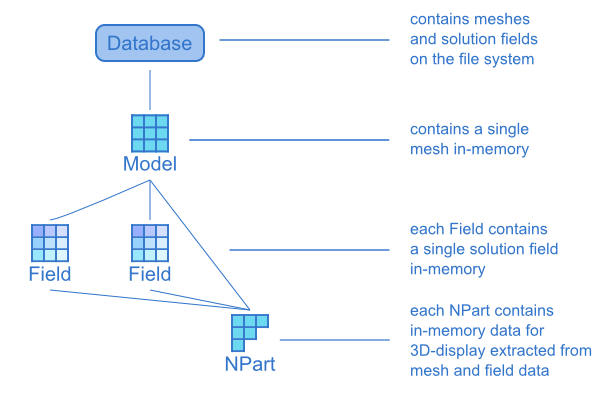The Model object is characterized as
follows:
-
It constitutes an access point to a MemCom database containing meshes and solution fields.
-
It contains a mesh (nodes and elements) in-memory which is used for instance by the
NPartobject(s) for mesh extraction, extraction of cuts, of iso-surfaces, etc. A MemCom database may contain many meshes simultaneously, stemming from different computational disciplines, or from different iterations of an optimization. In such cases, theModelobject permits to select the mesh to be loaded.
The Model object does not perform any
post-processing itself. In particular:
-
It is not a container for solution field data. This task is deferred to the
Fieldobject. -
It is not responsible for processing and preparing for OpenGL-display of any mesh and solution field data. This task is deferred to the
NPartobject.
The reasons for this restriction of the Model
object are the following:
-
Efficient OpenGL-display of 3D data requires the use of dedicated data structures which may occupy a large amount of memory. Specifically for CFD post-processing, only a small subset of the mesh and of the solution field data will be actually displayed in most cases; for instance the wall, the symmetry plane, or a cutting plane, but not the whole volume. Thus, in baspl++, the task of OpenGL-display is deferred to the object which performs the actual extraction and post-processing, the
NPartobject. -
MemCom databases may contain a very large number of meshes and solution fields, much larger than what would fit in main memory. Thus, it is important to load into memory only the portions of data that are actually needed for post-processing. Solution data is handled by the
Fieldobjects which make use of theModelobject to access the MemCom database.
The relationships between the different objects are displayed in the following figure:


